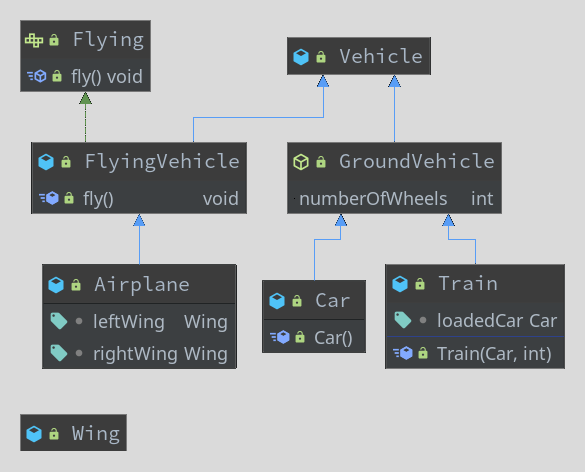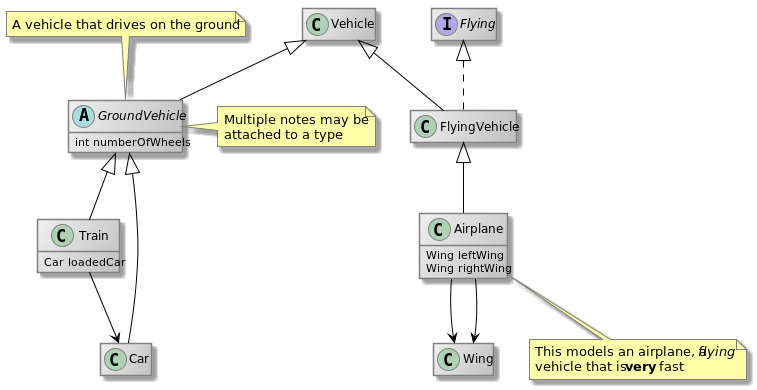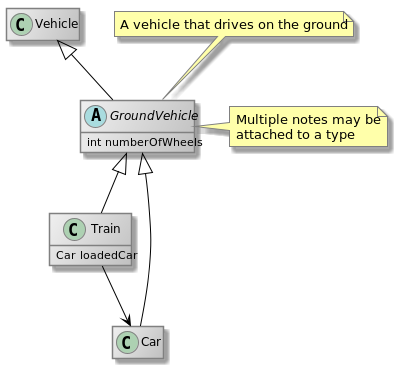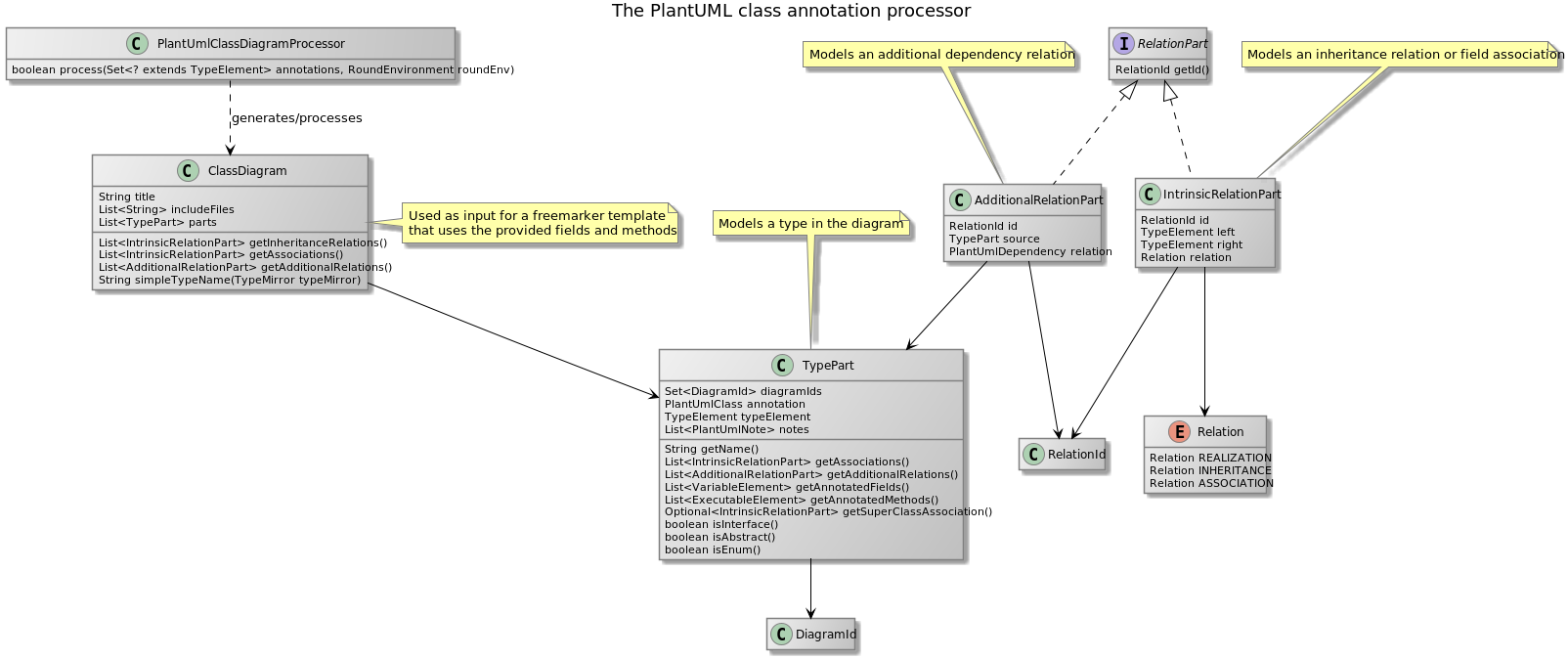Documentation is hard - every programmer knows this to be a fact. It’s also boring and repetitive, and the result often looks ugly and is hard to read (because not all programmers are poets). The fact that any written documentation is usually outdated before it has been finished doesn’t make it any better.
Therefore, writing documentation it is usually something programmers try to avoid.
The best documentation is the code itself.
There is a simple truth you will often hear when talking to programmers about documentation: the most accurate documentation is the code itself. It’s the only thing that won’t become outdated, won’t lie to you, and will always be complete.
Indeed, well written code and tests can be very helpful for documenting the purpose of a system. Specifically, a system following the practices established by Clean Code and Domain-driven Design is - usually - much easier to understand than one that has been written without those concepts in mind. Some of these practices are:
-
well-named types, methods and fields, using a common language between developers and customers
-
code structured with readability as a goal
-
well-designed modules that each serve a specific concept or set of concepts
Tests can also help in documenting how a system will behave, especially acceptance tests that are written using natural language or something close to it (e.g. Cucumber).
However, these (good) practices are only a part of the puzzle. Experience shows that sticking to these concepts is difficult - in fact, the notion often becomes purely academical when faced with the hard facts of time pressure and non-functional requirements (e.g. performance or security). Also, customers are often woefully ignorant of these issues and seldom offer the support required to develop a common understanding of the system.
So, simply skipping documentation is an even worse option than the one of investing lots of effort in hard-to-read, outdated documentation artifacts. From our experience, we consider both to be non-viable.
'Living Documentation' is a term coined by Gojko Adzik in his book Specification by example. His work (that is mostly about BDD - Behavior Driven Development) gave inspiration to the work of Cyrille Martraire, a french software engineer who tries to take the approach to a new level in his book Living Documentation. The core principles of Living Documentation are:
-
It is reliable - all documentation products are always accurate and in sync with the actual code
-
Producing and updating it is low effort
-
It is both a product and a medium of collaboration between all involved people
-
It is insightful for its consumers and sheds light on the important aspects of the system
One of the crucial insights taken from Cyrille’s book is that it is possible to produce a lot of helpful documentation artifacts by traversing the code using automated generators. The key difference to most existing tools that generate documentation (including diagrams) from code is that the tool chain is written in such a way that it permits the development team to adapt and enhance what comes out of it, producing results that both have real value and are still as close to the single source of truth (the code) as possible.
In this blog post, we build on the concept of Living Documentation. We concentrate on a subset of its ideas: Living Diagrams. We’d like to generate UML Diagrams, specifically UML Class Diagrams, directly from the code.
The idea to generate UML diagrams from source code isn’t new. Actually, it has a long history in software development, a history that is often quite disappointing. Many tools provide reverse engineering capabilities, for example:
-
UML tool suites
-
IDEs
-
Dedicated generators
There are tools like Together, Rational Rose, Enterprise Architect etc. They often do a decent job generating UML diagrams and sometimes even provide full Roundtrip-Engineering capabilities. However, they are usually extremely expensive, have a high learning curve and force the development team to fully buy into their proprietary way of working. In addition, the resulting diagrams are difficult to integrate into the actual documentation written outside of the tool itself, so often users will find themselves resorting to pasting image files that are - again - difficult to keep up-to-date.
IDEs like Netbeans, Eclipse or IntelliJ play somewhat in the same league. Their reverse engineering capabilities are usually less thorough, but also come at a cheaper price. Sadly, though, the IDEs' UML modules share most of the other negative aspects of their expensive brethren. For example, here is a diagram as IntelliJ IDEA would render it:
While this is a clean and nicely drawn UML diagram, the developer has not much influence on how it looks. For example, it cannot show field associations, and neither is there a possibility to include notes or comments to explain things. It is also impossible to exclude unwanted parts from the diagram or make references to types outside the package.
Quite contrary to the previously mentioned reverse engineering tools, dedicated UML diagram generators are usually cheap or even free of charge, for example the UMLGraph JavaDoc doclet. Since they can usually be made part of automated toolchains, it is often a lot easier to integrate their products into the parts of the documentation that live in close proximity to the code, for example JavaDocs. Despite these positive aspects, it’s usually still very difficult to influence what the diagrams display, and how.
Let’s revisit the concept of 'Living Documentation'. The fourth key concept is that any documentation should be insightful - in other words, it should provide real value to its consumer. To achieve that, documentation should be written from the editorial perspective:
The Editorial Perspective is based on the intent of the considered document. Of course this assumes that each document has a clearly identified purpose, for an identified audience, which should be the case.
Living Documentation
So, a diagram that is useful to its consumers should fulfill the following requirements:
-
It should show only the parts of the system that is relevant to the intended audience
-
It should be possible to annotate the diagram with information that is relevant for the intended audience
-
It should always be up to date
The PlantUML Class Diagram Generator is a tool that produces PlantUML Class diagrams from annotated Java source code. It produces nice-looking, ready-to use diagrams that are easy to include into existing documentation artifacts. In addition, developers have the possibility to heavily influence the output in order to produce diagrams with real value for its consumers.
PlantUML is a tool that generates various types of UML diagrams from a written specification. It has a simple but powerful language for describing UML diagrams, with further annotation and styling capabilities that allow producing diagrams that are both useful and nice looking. Some of the supported diagram types are:
-
Use Case
-
Class
-
Sequence
-
Activity
-
Component
The PlantUML Class Diagram Processor creates only class diagrams and can be used to document class hierarchies that live in a specific package. Due to PlantUML’s ability to import diagrams into other diagrams, it is also possible to display whole package hierarchies in a songle diagram. However, thanks to its underlying concepts, these diagrams can be tailored to show only classes that are relevant for specific use cases, so they won’t overwhelm the reader with superfluous or redundant information.
The generator is designed around a limited set of principles derived from the ideas of Living Documentation:
| Relevance |
The programmer decides what elements from the sources should show up in generated diagrams, so they are always relevant to the use case depicted |
| Proximity |
Diagram controls are an intrinsic part of the source code, so its unlikely they’ll become outdated |
| Configurability |
Diagram Controls give the developer a lot of control over what is generated and may be annotated with additional information, e.g. comments |
| Currentness |
Diagrams are re-generated with every build |
At the moment, the annotation library contains following annotations for class diagrams:
- @PlantUmlClass
-
This is the main annotation to be used for class diagrams. When added to a Java type (interface, class or enum), a representation of this type is included in one or more diagrams.
- @PlantUmlField
-
This annotation may be added to a field within a type already annotated with @PlantUmlClass. It will render the field as part of the class body and/or add an association to the field’s type, provided that type is also part of the diagram.
- @PlantUmlExecutable
-
Annotation for methods that should show up within a type already annotated with @PlantUmlClass. It will render the method as part of the class body, provided that type is also part of the diagram.
- @PlantUmlNote
-
This annotation may be used to associate one or more UML notes with a type, providing further textual description.
- @PlantUmlDependency
-
Can be used to draw additional dependency relations between types that are not directly connected via an association.
The annotation processor is a normal Java annotation processor that can be included easily as a Java compiler argument -
either using the programmer’s favorite Java IDE’s project configuration, or as part of the build process.
The annotation processor produces a model of the elements to be rendered in the resulting diagrams and then outputs the
PlantUML source code. The annotation processor can be configured using the following options (specified using the -A
parameter of the Java compiler):
| Option | Default value |
|---|---|
pumlgen.settings.dir |
|
pumlgen.out.dir |
|
pumlgen.enabled |
|
The test sources contain an artificial class hierarchy that models different types of vehicles and is used as a (quite simple) example. Please have a look at the diagram - it is auto-generated using the annotation processor:
The first example displays the hierarchy of all annotated classes in the package. We find it notable how clean and expressive this diagram is compared to diagrams rendered using conventional means:
-
It shows all the associations between the classes that the annotation processor managed to discern from the Java type model: inheritance (both realization and implementation) as well as field references
-
It has a note. In our view, notes are often the single thing that converts a say-nothing diagram into something that helps the reader understand the software fully
ℹ️We did not consider it useful to render the contents of JavaDoc comments in notes. First, comments use HTML markup and PlantUML uses the Creole markup language. Second, a JavaDoc comment that fully describes a complex type can be very large. It makes much more sense to write a brief (and possible redundant) description into the annotation itself.
It is also possible to render multiple different diagrams from the same sources. This is controlled through the
diagramIds attribute of the @PlantUmlClass annotation. This is a list of strings that define the diagrams where
the type will appear.
| DiagramId |
The diagram ID is the part of the filename that comes before the |
In this section, we will look at the internal structure of the annotation processor. To reach our goal to auto-generate PlantUML class diagrams, we had to solve the following problems:
-
Annotation definition
-
How to implement an annotation processor
-
How to produce the diagram
This is actually the easiest part. We begin with the top-most annotation we want to process, the @PlantUmlClass.
From there, we consider what diagram elements we want to display and what additional information is required to enrich
the resulting diagrams:
- Type elements
-
A type in the class diagram is created from a class, interface or enum in Java. All required information about the type itself can be gleaned from the Java source code except for the following:
-
We want to know in which diagrams the type will appear, so we introduce an attribute
diagramIds -
There should be a possibility to attach a note to the type. For this, an additional annotation is created, the
@PlantUmlNote, with an attributebodythat defines the text body (optionally with Creole markup), and an attributepositionthat permits to position the note in relation to the element it’s attached to.
-
- Fields and methods
-
As with types, we do not want to indiscriminately include all fields and methods in the class diagram. So we need at least one other annotation to mark fields and methods to be displayed. Considering that there may be more (and quite different) information we need to provide depending on the type of element, we decided to actually have two separate annotations
PlantUmlFieldfor fields andPlantUmlExecutablefor methods and constructors. - Dependency Relations
-
Finally, we want to be able to define relations between classes that are not visible in the source code (through fields). In UML, these are called dependency relations and depicted using a dashed line between elements. So there is another annotation
@PlantUmlDependencywith an optionaldescription.
Defining a Java annotation is clearly documented and the knowledge how to do this should be a part of every Java programmer’s toolbox:
@Target({ ElementType.TYPE }) // (2)
@Retention(RetentionPolicy.SOURCE) // (3)
public @interface PlantUmlClass { // (1)
String[] diagramIds() default { "package" }; // (4)
}-
An annotation is a special form of interface, identified by the keyword
@interface -
For every annotation, a list of possible targets needs to be specified identifying the elements where the annotation is allowed to appear (e.g. type, field, method, …)
-
Also for every annotation, the programmer should specify the retention policy. This tells the compiler what to do with the annotation after processing it. Most Java programmers choose
RetentionPolicy.RUNTIMEquite automatically because (1) its the retention policy used in most examples and (2) because a lot of annotations are processed at runtime using reflection. However, the annotations of the PlantUML class diagram processor will be required neither by the compiler nor at runtime, so we discard them after the processing phase (RetentionPolicy.SOURCE)
All Java programmers know how to use annotations, and most of the more senior ones know how to write and process them - at runtime. To process annotations at compile time, however, requires some additional steps:
-
Implement the Processor interface
-
Make the processor known to the Java compiler
-
Implement logic based on the Java (annotation processing) language model
@SupportedAnnotationTypes("com.comsysto.livingdoc.annotation.plantuml.PlantUmlClass") // (3)
@SupportedOptions({KEY_SETTINGS_DIR, KEY_OUT_DIR, KEY_ENABLED}) // (4)
@SupportedSourceVersion(SourceVersion.RELEASE_8) // (5)
public class PlantUmlClassDiagramProcessor extends AbstractProcessor { // (1)
@Override
public boolean process(final Set<? extends TypeElement> annotations, final RoundEnvironment roundEnv) {
// ... (2)
}
// ...
}-
All annotation processors must implement the interface Processor or its descendant AbstractProcessor
-
Annotation processors need to define the annotations they process. This list doesn’t have to include all annotations used by the processor, however! Only the top-level annotations that should be delivered by the processing framework when it calls the
process(..)method are required here - in our case, that’s only the annotation@PlantUmlType -
Processors need to define the options they process - those put on the
javaccommand line using the-Aparameter -
Processors need to define the Java source version they understand
-
The current version of the processor has been tested with Java 8
In addition to the implementation processor, we have to add the following file:
com.comsysto.livingdoc.annotation.processors.plantuml.PlantUmlClassDiagramProcessorThis file, containing only the fully qualified class name of the processor, causes it to be registered with the annotation processing environment.
|
💡
|
Alternatively, Google Autoservice may be used to auto-generate this file. |
The first version of something is seldom perfect. There is a lot more that could be done:
-
Support for additional class diagram elements
-
Support for other diagram types
While the feature set supported by the annotation processor is enough to use it in a productive way, the limits of what may be rendered into the resulting class diagrams are still obvious. For example, there is no support yet for:
-
Methods
-
Relation notes
-
Special associations like aggregation and composition
-
Floating notes
-
Generics
-
Stereotypes
-
…
For us, generating class diagrams is only a first step. Going further, we’d like to investigate rendering other diagram types. The class diagram was the obvious place to start, since its features closely match the information that can be gleaned from the information harvested by the annotation processing environment.
In this blog post, we have shown that it is well possible to generate useful diagrams from source code by giving the developers a big deal of influence on the outcome using Java annotations, along with a tool set that, while still being in an early stage of development, can already produce very nice and fully accurate class diagrams. We hope that this blog post will be the first in a series in which we will try to extend its capabilities into a complete tool suite that helps developers in writing documentation that is accurate, close to the code, and always up to date.



